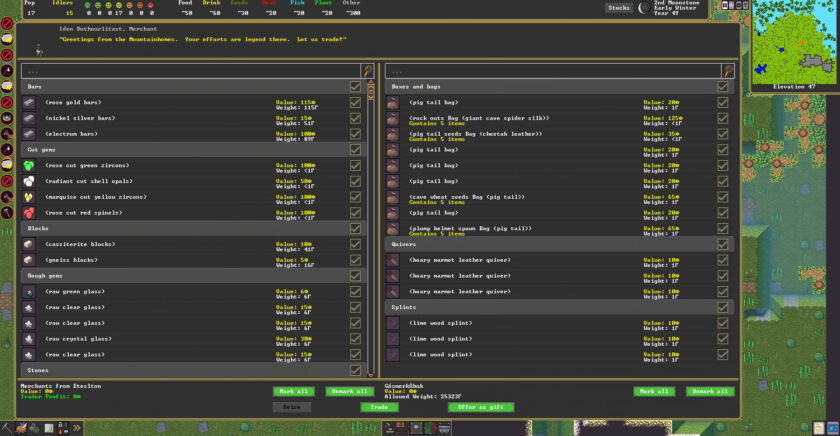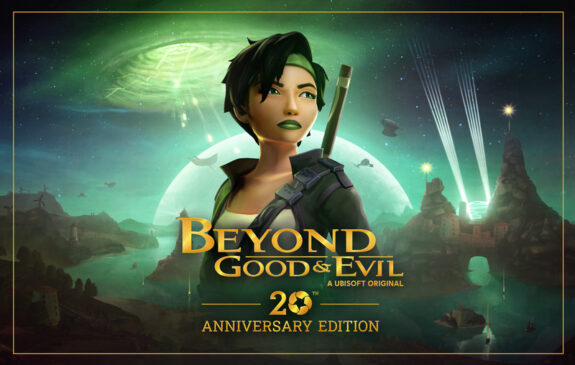
Dwarf Fortress, a legendary game that gave rise to a genre and inspired countless games, has finally made its way to Steam, offering much-needed QOL additions and a visual overhaul, that makes it a much more accessible experience for both veterans and newcomers alike. It’s not easy reviewing a behemoth of a game like Dwarf Fortress, but I’m going to give it a shot anyway.
Dwarf Fortress is my favorite game. The kind of emergent gameplay and depth it offers, is still not available in any game, not even Rimworld, although it does come close. That’s saying something considering the fact that Dwarf Fortress has been technically out for over a decade. The fact that no game has been able to emulate the depth and complexities offered by Dwarf Fortress, and not by the lack of trying, because there are countless Dwarf Fortress inspired games out there, is a testament to the fact that Dwarf Fortress is more than just a colony sim or a management game. It’s a simulation experience that offers a living world with its own complex politics and history, it’s inhabitants having their own desires and needs. Each run feels different, because the world, history and inhabitants are completely generated randomly. It’s not simple X,Y,Z factions living in a randomly generated map, oh no, Dwarf Fortress gives rise to entire clans, heroes, and legends, simulating wars and rise to powers. And then it lets you drop into this world that it has created, free to make your own mark in this virtual world.

The main experience of Dwarf Fortress, and currently the only one on offer in the steam version is the Fortress mode. It allows you to take control of a Dwarven colony, and it’s up to you to make sure they thrive and become a successful fortress. The biggest change in comparison to the other games in the market is the complete lack of micro managing your colonists. This means that you have very little direct control over them, and instead can only offer indirect commands and orders to try and lead your dwarves into functioning as a successful society. This doesn’t always work however, and there will be the occasional instance where one dwarf might fall into a pool and drown while trying to draw some water, and one of their lovers might go on a suicidal rage and kill most of your colonists before your other sane dwarves might be able to stop them. There’s no predicting what the game might throw at you, only the anticipation and preparation of whatever lies ahead.
Before I dive more into what make Dwarf Fortress such a compelling game, I have to highlight the improvements and additions that the steam version offers. First and most apparent of all, the graphics. Dwarf Fortress’s ASCII visuals while having a charm of their own, was an absolute nightmare for some people and one of the biggest reasons why the game was not as widely played. Despite some fans actually missing the ASCII art style, the general consensus is that the new pixelated art style is an absolute vast improvement, and being able to actually see your surroundings and prompts of your dwarves as small bubbles means that there’s less guesswork involved when it comes to making sure your fortress is functioning as it should be. The art style is absolutely gorgeous and suits the game as well, and offers a whole new perspective that made me appreciate the game even more.

The second biggest improvement from the classic version is the user interface and controls. Gone are the entire book’s worth of keyboard based control scheme, replaced with a modern mouse based system. You are now able to click on menus, buildings and even inhabitants of your game, to find out more about them, and issue new orders or build new things. Finding out critical information about your colony is as simple as clicking an icon now. The complexity of Dwarf Fortress was without a doubt doubled by the lack of modern controls, and the ability to finally use the mouse and quickly get things done by clicking or just simply dragging the map around to get a better view instead of memorising key presses is a huge improvement, and for a lot of people, even more important than the visuals themselves. However, the mouse based interface does have a few drawbacks. For starters, there’s way too many clicks now, and getting anything done involves at least 3+ clicks. Now this is expected from a complex game like Dwarf Fortress, but there could have been a more streamlined approach. Secondly, the moving around the map with the mouse thing felt a bit jittery at times.
Finally on the list of the most apparent improvements, there’s an actual soundtrack and sound effects, and its beautifully well done and suits the game beautifully. The game’s ambiance feels vastly immersive now, and the soundtrack is fitting.
Back to the gameplay of Dwarf Fortress, now that we have the improvements out of the way, the gameplay of Dwarf Fortress feels highly unpredictable, though its become way more easy to manage your colonists thanks to you being to actually see what they are doing instead of simply seeing ascii blocks moving around your screen. This takes out a lot of intimidation that Dwarf Fortress had, especially for beginners but as soon as you start expanding your base and see that even building something as simple as a well for water requires you to craft each individual part, the difficulty curve slowly starts hitting you like a brick.
Failure is not something to lament in Dwarf Fortress, as each failed try lets you appreciate the complexity and intricacies of Dwarf Fortress even more. Each run is equally different, and as a result, aside from maybe building the same starting buildings, the gameplay never feels repetitive. On one run, dragons may have been completely exterminated by a heroic dwarf out for vengeance, while on another, a wild wyvern might decide to make your colony its nesting place for the winter. It’s wild and completely unpredictable what the world might throw at you. There’s entire novels worth of lore and writing completely generated by the engine at random. Each of your dwarf has their own personalities and needs, inner thoughts and interactions. The complex layers of Dwarf Fortress starts surrounding you slowly, and as soon as you feel that you’ve mastered one aspect of Dwarf Fortress, it somehow manages to surprise you yet again. There’s no limitation to what you can do with the world that Dwarf Fortress generates for you, only your own capabilities and understanding of the gameplay systems are what limit you from doing what you like.
You cannot treat the world of Dwarf Fortress as something to be conquered, and bend to your own liking. Trying to harness the power of lava without understanding the dangers of it for example, can mean a thriving colony being flooded with magma and an end to your 20 hour campaign. You have to coexist and try to create a colony that cohabits with the elements of the world. Build systems that can harness utilise what the game throws at you. You can take advantage of your Dwarves being inspired by nature to build magnificent crafts so that you can then trade it for much needed supplies for the winter. You can anticipate that your dwarves might be under siege from a nearby goblin colony and build elabarote traps to ensure your colony survives the onslaught. It’s incredible just how much Dwarf Fortress manages to push creativity and imagination of its players because of the in-depth simulation that it offers.
I’m extremely excited to see how the devs manage to modernise the adventure mode and bring it to the steam version. That mode is a beast of it’s own but that’s a rant for a different time.
Final Thoughts
Summary
If there's ever a game that fits the answer to the question "If you stranded on an island, which game would you choose to bring", it would be Dwarf Fortress. The steam version manages to make the experience a lot more accessible, but the limitless potential still remains untouched.







